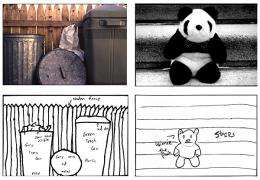Research explores common visual error of 'boundary extension'

(Medical Xpress) -- Helene Intraub, professor of psychology at the University of Delaware, and then-undergraduate researcher Mike Richardson first published their paper on the phenomenon of "boundary extension" in 1989, describing a phenomenon that surprised many observers.
They found that boundary extension is an error people make after viewing a photograph. Instead of remembering the view in the photograph correctly, they report having seen more of the world than was actually shown in the picture.
Since that initial research finding, Intraub and colleagues have learned more about boundary extension. She and her then-postdoctoral researcher Chris Dickinson discovered that the phenomenon occurs in as little as one-twentieth of a second (one-eighth the duration of an eye blink), and, through research conducted in collaboration with fellow UD psychology Prof. Paul Quinn in his infant lab, they found that babies as young as 3 months make this error.
Now, Intraub has found that boundary extension is not restricted solely to vision. People make this same error through their sense of touch after manually exploring a scene, she says.
Her latest discoveries, published earlier this year in the journal Current Biology, were part of an international collaboration with Eleanor Maguire in the United Kingdom, where boundary extension was examined to see if it occurred in patients with a type of brain damage that had led to a severe form of amnesia.
Interestingly enough, Intraub said, these patients with severe memory problems actually made little or no boundary extension errors. Because their imaginations were impaired, they were unable to imagine and anticipate what their unseen surroundings would look like. As a result, they remembered the boundary limits of a view more accurately than those people without brain damage.
Boundary extension may be applicable to the medical field as well, Intraub said, explaining that her research may help scientists understand brain damage and provide further insight into it. It also may be helpful in describing to patients with visual deficits what their condition entails and what is occurring in their brain to cause it.
















